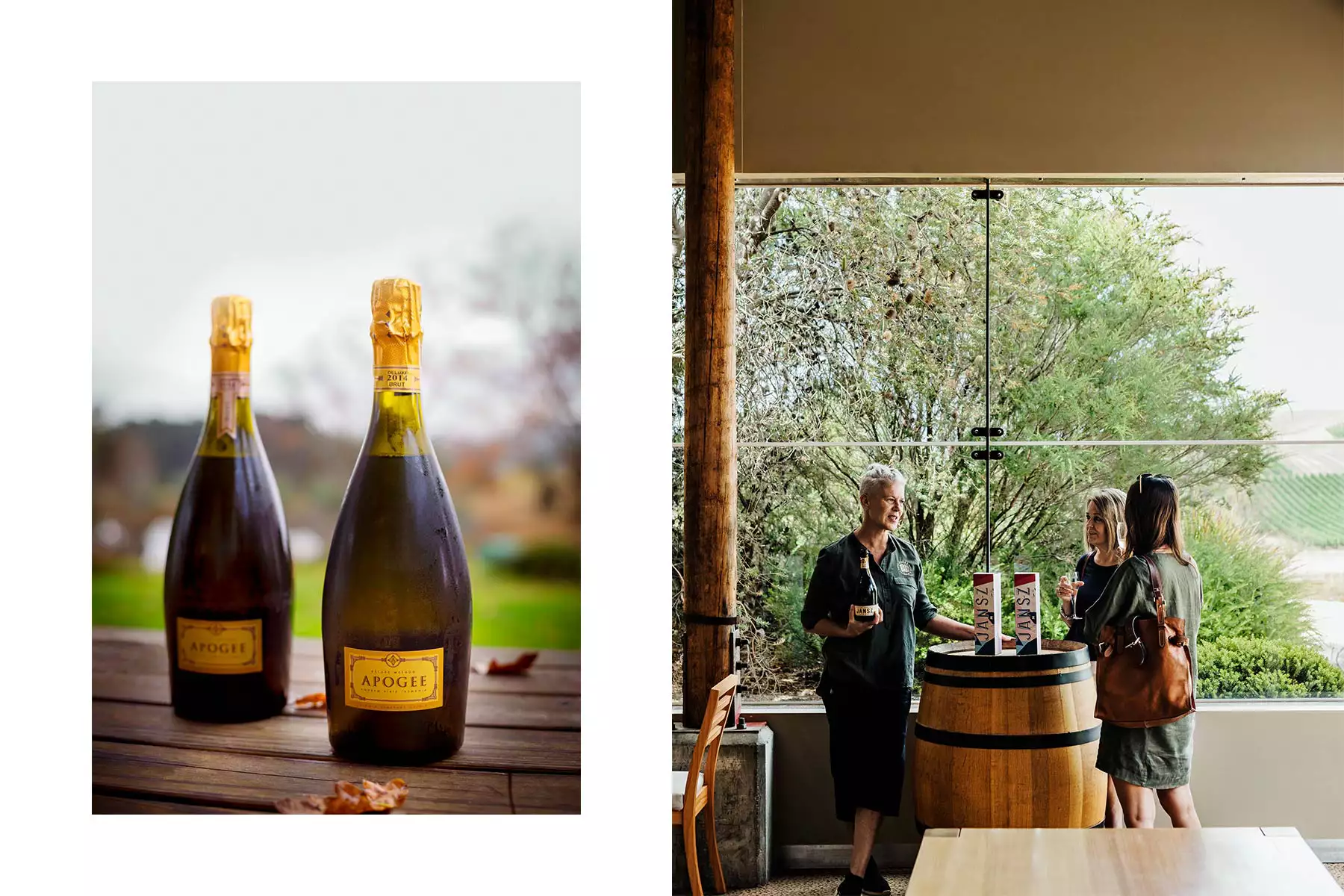Discovering Tasmania’s Sparkling Wine Scene
For decades, the wines produced in Tasmania remained a closely guarded secret; however, they are now winning awards and attracting global travelers.
1. Winemaker’s Dreams
There is a unique quality to the light in Tasmania, an ethereal atmosphere enhanced by its stunning scenery. Standing at the highest point of the estate Stefano Lubiana Wines and overlooking the vineyards sloping toward the Derwent River, one can understand why Lubiana, a winemaker from South Australia, chose this location 32 years ago. Yet, it was not merely the breathtaking view towards Hobart that drove him here; rather, he pursued a specific dream: to craft world-class sparkling wine that required an equally specific environment.
“I was looking for a place with a cool climate but no frost, a variety of soils, and a long growing season,” Lubiana shared. Having been raised in a family of winemakers with Italian roots, he identified Tasmania as the perfect locale for his vision. Today, nearly 40 percent of the island’s wine production consists of sparkling varieties, which are increasingly gaining recognition on the global wine stage.
2. House of Arras Recognition
In 2020, the esteemed wine magazine Decanter crowned the E. J. Carr Late Disgorged 2004 bottling from House of Arras in Tasmania’s Tamar Valley as the world’s top sparkling wine during its World Wine Awards, outshining many renowned wines from Champagne and other established regions.
3. Exploring Launceston
In June, I flew from my hometown of Melbourne to Hobart and drove for 2½ hours to Launceston, Tasmania’s second-largest city. While it’s an easy commute for locals, international visitors can also enjoy this journey now that Australia’s borders have reopened. Designated a UNESCO City of Gastronomy in 2021, Launceston serves as the ideal base for exploring the Tamar Valley—the heart of Tasmania’s sparkling wine production. This city, with its rich and often haunting history, offers a picturesque countryside that pulses with life, especially in spring and winter.
On my first night, I dined at Stillwater Restaurant & Seven Rooms, a boutique hotel situated within a historic 1840s flour mill, overlooking the Tamar River. After enjoying a wonderful meal and a restful night in a spacious room, I visited the House of Arras winery to engage with head winemaker Ed Carr.
4. The Winemaking Journey
With an extensive history in Tasmanian winemaking, Carr has dedicated his craft to sparkling wines since founding the House of Arras in 1995. Some of his sparkling wines incorporate Chardonnay and blends while others include Pinot Meunier, adding depth and complexity. “We prioritize tannic structure alongside sweetness and acidity,” Carr explained.
Convincing the world of Tasmania’s sparkling wines as equal to those from Champagne or Italian Prosecco may require considerable effort. The finest Australian sparkling wines tend to remain within the domestic market, lacking an international reputation akin to that of other top-tier varieties, such as Shiraz. Nonetheless, the wines I tasted during my trip could rival some of the world’s best offerings, each reflecting a bright acidity and an ability to gracefully age over time.
5. Tasting Experiences
Later, I visited Apogee, a quaint vineyard where I met vintner Andrew Pirie. His sparkling wines are refreshing and enjoyable upon release, yet their full potential is still unknown. “My first vintage here was in 2010, and none of my wines have reached their peak yet,” Pirie said, hinting at their future excellence.
At Jansz Tasmania, one of the state’s largest sparkling wine producers, I enjoyed an impressive tasting in their convivial atmosphere. To fully grasp Tasmania’s diverse offerings, visiting in person is truly essential.
6. Cultural Attractions
The next day, I journeyed back to Hobart via Highway 1, stopping to explore charming shops and cafés in quaint towns along the way. Not long ago, Tasmania mainly featured quaint bungalows available for rent, but now a variety of boutique accommodations is available, such as Rox—a collection of luxury apartments in Hobart, some modern and others vintage in style.
During my visit to the Museum of Old & New Art, a premier tourist destination situated on the Moorilla Estate—known for its exceptional sparkling wines—I discovered the vibrant cultural scene emerging in Tasmania. The museum’s team also initiated Dark Mofo, a winter solstice arts festival showcasing local food and drink culture over a two-week celebration. The event transforms Hobart’s lively streets into a hub of celebration.
For dinner that night, I experienced Dier Makr, a cozy restaurant celebrated for its unpretentious yet innovative cuisine. Dishes like duckfish tartare with radishes and a sunchoke-cheddar froth, paired with a remarkable sparkling wine, exemplified how dining in Tasmania can be equally compelling and memorable.





